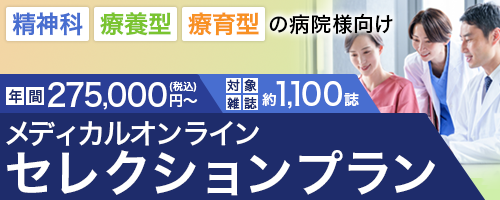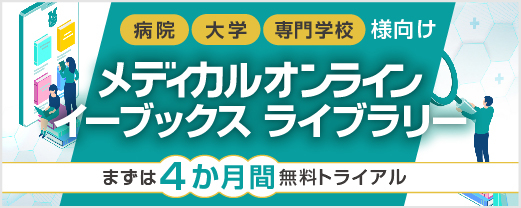アブストラクト
Japanese
| Title | 回復期リハビリテーション病棟退院後の男性脳卒中者が「ありたい自分のイメージ」と折り合いながら社会参加を継続するプロセス |
|---|---|
| Subtitle | 原著論文 |
| Authors | 重田優子*1,*2, 笹田哲*3 |
| Authors (kana) | |
| Organization | *1神奈川県立保健福祉大学大学院保健福祉学研究科博士後期課程, *2医療法人社団健齢会ふれあい平塚ホスピタル, *3神奈川県立保健福祉大学大学院保健福祉学研究科 |
| Journal | 作業療法 |
| Volume | 42 |
| Number | 4 |
| Page | 426-434 |
| Year/Month | 2023 / 8 |
| Article | 原著 |
| Publisher | 日本作業療法士協会 |
| Abstract | 要旨:【背景と方法】我が国の地域在住脳卒中者は社会参加の機会に乏しく, 男性高齢者の社会参加・交流には特に課題が多いとされる. そこで, 男性脳卒中者が社会参加を経験するプロセスを複線径路等至性アプローチに基づいて分析した. 【結果】3名の参加者は, 入院中も途切れることなく社会参加を継続し, 発症による様々な変化に向き合う中で『ありたい自分のイメージ』という価値に基づき, その価値観を体現できる社会参加という行為を選択していくプロセスを語った. 【結論】男性脳卒中者の社会参加促進には, その人の持っている価値観を捉え, その価値観に依拠して将来の見通しを持つことができるよう支援することの重要性が示唆された. |
| Practice | 医療技術 |
| Keywords | 社会参加, 質的研究, 脳卒中, 複線径路等至性アプローチ, Social participation, Qualitative research, Stroke, Trajectory Equifinality Approach |
English
| Title | Social participation of male stroke survivors after discharge from a recovery rehabilitation ward while coming to terms with the image of the "ideal self" |
|---|---|
| Subtitle | ORIGINAL ARTICLES |
| Authors | Yuko Shigeta*1,*2, Satoshi Sasada*3 |
| Authors (kana) | |
| Organization | *1Doctoral course, Graduate Course of Health and Social Services, Kanagawa University of Human Services Graduate School, *2Medical Corporation Association Kenreikai Fureai Hiratsuka Hospital, *3Graduate Course of Health and Social Services, Kanagawa University of Human Services Graduate School |
| Journal | JAPANESE OCCUPATIONAL THERAPY RESEARCH |
| Volume | 42 |
| Number | 4 |
| Page | 426-434 |
| Year/Month | 2023 / 8 |
| Article | Original article |
| Publisher | JAPANESE ASSOCIATION OF OCCUPATIONAL THERAPISTS |
| Abstract | [Background] Cerebrovascular disease is the most common target disease in occupational therapy practice among physical disabilities in Japan. However, it has been pointed out that stroke survivors living in the community in Japan have few opportunities for social participation, and that elderly males have less social interaction than elderly females, indicating greater challenges in social participation for male stroke survivors. Therefore, this study clarifies the subjective experience of how male stroke survivors experience social participation. [Method] This study used the Trajectory Equifinality Approach (TEA), a qualitative research method developed in the field of cultural psychology, which is capable of depicting the process of human development and emergence. [Results] The three participants continued to experience social participation without interruption during their hospitalization, and they talked about the process of choosing social participation acts that could embody their values based on these values and images of "who they want to be" in the face of various changes caused by the onset of stroke. [Conclusion] The study suggests that in order to promote social participation of male stroke survivors, it is important to understand their values and support their future vision based on said values. |
| Practice | Medical technology |
| Keywords | Social participation, Qualitative research, Stroke, Trajectory Equifinality Approach |
- 全文ダウンロード: 従量制、基本料金制の方共に770円(税込) です。
参考文献
- 1) GBD 2015 Disease and Injury Incidence and Prevalence Collaborators: Global, regional, and national incidence, prevalence, and years lived with disability for 310 diseases and injuries, 1990-2015: a systematic analysis for the global burden of disease study 2015. Lancet 388(10053): 1545-1602, 2016.
- 2) 内閣府:令和元年版高齢社会白書(全体版)第1章高齢化の状況,第2節高齢期の暮らしの動向,2健康・福祉,(2)65歳以上の者の介護. https://www8.cao.go.jp/kourei/whitepaper/w-2019/zenbun/pdf/1s2s_02_01.pdf
- 3) 日本作業療法士協会:作業療法白書2015. https://www.jaot.or.jp/files/page/wp-content/uploads/2010/08/OTwhitepepar2015.pdf
- 4) 石川誠:回復期リハビリテーション病棟の役割.治療 87(1):133-138, 2005.
- 5) 宮井一郎:回復期リハ病棟協会2015年実態調査の結果とその活用.回復期リハビリテーション 15(2):6-20, 2016.
残りの27件を表示する
- 6) 小林幸治,小林法一,山田孝:脳卒中者は病前との連続性を回復する際に作業療法をどのように意味づけているか.作業療法 31(3):256-266, 2012.
- 7) 小林江里香,深谷太郎,杉原陽子,秋山弘子,Jersey Liang:高齢者の主観的ウェルビーイングにとって重要な社会的ネットワークとは-性別と年齢による差異-.社会心理学研究 29(3):133-145, 2014.
- 8) 金貞任,新開省二,熊谷修,藤原佳典,吉田祐子,他:地域中高年者の社会参加の現状とその関連要因-埼玉県鳩山町の調査から-.日本公衛誌 51(5):322-334, 2004.
- 9) Han B: Depressive symptoms and self-rated health in community-dwelling older adults: A longitudinal study. J Am Geriatr Soc 50(9): 1549-1556, 2002.
- 10) 鈴木ひろみ,山田孝,小林法一:ADLが自立している在宅脳卒中後遺症者の自信とその関連要因の検討.作業行動研究 13(3):137-149, 2009.
- 11) 野辺政雄:高齢者の社会的ネットワークとソーシャル・サポートの性別による違いについて.社会学評論 50(3):375-392, 1999.
- 12) 河合慶子:高齢者人材活用事業-高齢者の社会参加についての一考察-.人間研究 20:37-65, 1984.
- 13) 百瀬由美子,麻原きよみ,大久保功子:小地域単位の住民主体による高齢者健康増進活動の評価-参加者の主観的効果を評価指標として-.日本地域看護学会誌 3(1):46-51, 2001.
- 14) 矢野香代,近森由江,広瀬美映,山脇優子:高齢男性の社会参加要因.川崎医療福祉学会誌 17(2):437-443, 2008.
- 15) 佐藤隼,市川勝,吉野靖,松宮英彦:在宅脳卒中後後遺症者の社会参加状況に関する予備的調査-訪問リハビリテーションの観点から-.臨床福祉ジャーナル 5(1):38-45, 2008.
- 16) 福田久徳,吉川ひろみ:病後の作業再開を可能にした背景.作業療法 30(4):445-454, 2011.
- 17) 小向佳奈子,藤本修平,杉田翔,光武誠吾,輪違弘樹,他:リハビリテーション分野における社会参加の定義と評価指標-定性的システマティックレビュー-.理学療法科学 32(5):683-693, 2017.
- 18) Bonder BR: Family Occupation in Later Life. Journal of Occupational Science 13(2): 107-116, 2006.
- 19) サトウタツヤ,神崎真実:TEAというアプローチ.安田裕子,滑田明暢,福田茉莉,サトウタツヤ・編,TEA理論編-複線径路等至性アプローチの基礎を学ぶ-第1刷,新曜社, 2015, pp.4-24.
- 20) 荒川歩,安田裕子,サトウタツヤ:複線径路・等至性モデルのTEM図の描き方の一例.立命館人間科学研究 25:95-107, 2012.
- 21) 土藏愛子:理論を知って実践に活かす!手術室の問題解決ナビ 問題解決技法-KJ法とは-.オペナーシング 28(5):532-535, 2013.
- 22) 長尾宗典,小林隆司:脳卒中当事者が介護保険下の通所リハビリテーション利用を終了していく経験プロセス.作業療法 37(6):637-645, 2018.
- 23) Trajectory Equifinality Approach Research Association: TEA研究会. https://sites.google.com/site/kokorotem/home?authuser=0
- 24) 回復期リハビリテーション病棟協会:回復期リハビリテーション病棟の現状と課題に関する調査報告書. http://plus1co.net/d_data/29_zitai_book.pdf
- 25) Teater B, Chonody JM, Hannan K: Meeting social needs and loneliness in a time of social distancing under COVID-19: a comparison among young, middle, and older adults. J Hum Behav Soc Environ 31(1-4): 43-59, 2021.
- 26) Jellema S, Bakker K, Nijhuis-van der Sanden MWG, van der Sande R, Steultjens EM: The role of the social network during inpatient rehabilitation: A qualitative study exploring the views of older stroke survivors and their informal caregivers. Top Stroke Rehabil 29(1): 30-39, 2022.
- 27) 石川久展,冷水豊,山口麻衣:高齢者のソーシャルネットワークの特徴と生活満足度との関連に関する研究-4つの地域特性別分析の試み-.人間福祉学研究 2(1):49-60, 2009.
- 28) 吉井清子,近藤克則,久世淳子,樋口京子:地域在住高齢者の社会関係の特徴とその後2年間の要介護状態発生との関連性.日本公衛誌 52(6):456-467, 2005.
- 29) 西野由希子,山田孝:地域生活する男性脳卒中障害高齢者の作業適応と人間関係の変容プロセス.作業行動研究 15(3):109-118, 2011.
- 30) ScaffaME(山田孝・訳):地域に根ざした実践-文脈の中での作業-.Scaffa ME・編(山田孝・監訳),地域に根ざした作業療法 第1刷,協同医書出版社, 2005, p.8.
- 31) Kielhofner G, Mallinson T, Crawford C, Nowak M, Rigby M, et al(石井良和,長谷龍太郎・訳):OPHI-IIの研究・開発の歴史.Kielhofner G・編(山田孝・監訳),作業遂行歴面接第2版 OPHI-II 使用者用手引,日本作業行動研究会, 2003, pp.5-13.
- 32) 坂本麻衣,山田孝:作業適応した中途障害者が作業同一性を再獲得したプロセス.作業行動研究 19(3):133-142, 2015.



